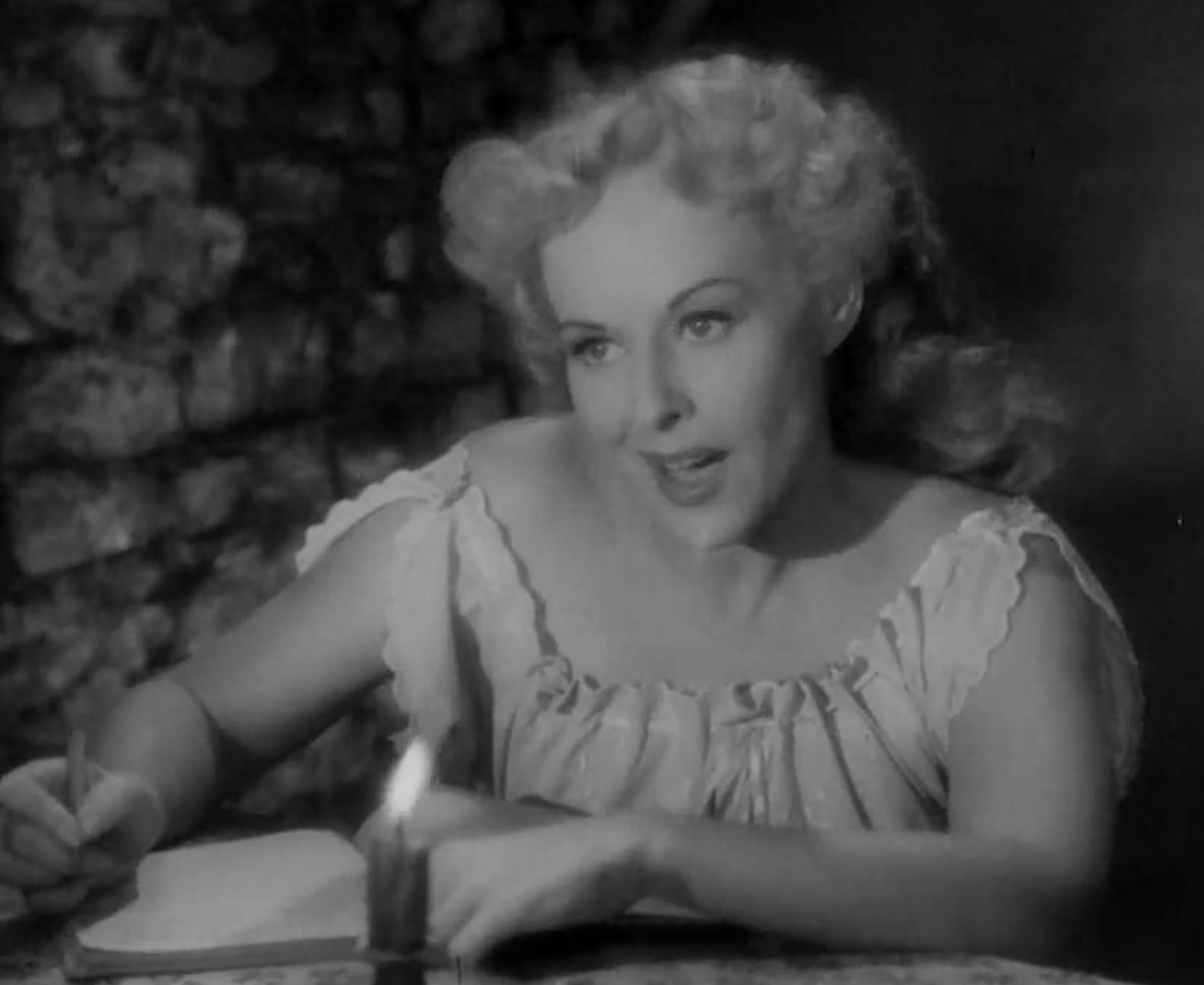
- Industry
Restored by HFPA: “The Diary of a Chambermaid” (1946)
The poster for director Jean Renoir’s 1946 film Diary of a Chambermaid shows a large photo of Paulette Goddard wearing a (very short) maid’s uniform and a knowing smile, holding up a key and resting her arm on a very large book (the diary) against a bright yellow background. Elsewhere on the poster are pictures of her embracing three different men. Viewers may be forgiven if they think the film is a lighthearted comedy/romance.
Tonally, the film is all over the place. Comedic scenes are overacted with gusto; loud celebratory scenes give way to film noir-ish twists involving murder, with the cast switching to melodramatic emoting. While Renoir is trying to encompass the serious subject of the class differences and resentments of the time into an audience-accessible entertainment, the film doesn’t quite work. The same themes were explored in his 1939 film La Règle du Jeu with much more success.
Renoir made Diary of a Chambermaid during his Hollywood period, when he escaped the Nazi occupation of France and settled in Los Angeles for nine years, eventually even taking US citizenship. The script, written by Burgess Meredith, was based on the 1900 novel by Octave Mirbeau (a sponsor of Auguste Renoir, Jean’s father) and the subsequent 1931 play, Le Journal d’une Femme de Chambre, by Andre Heusé, Andre de Lorde, and Thielly Nores.
According to an article in the New York Times on July 22, 1945, the film was to be produced by RKO studios but, due to creative differences over the script, Renoir, Goddard, and Meredith, who were producers, parted ways with RKO and set up their own company, Camden Productions, to make the film. Goddard (Charlie Chaplin’s ex-wife) and Meredith were married at the time. Funding in the amount of $900,000 was provided by Benedict Bogeaus, owner of General Service Studios, which still exists today as Sunset Las Palmas Studios). Bogeaus got producer credit. His name was on the poster as well.
The story is set in 1885 France even though everyone speaks English with an American accent. Goddard plays Celestine, the most sophisticated and well-dressed chambermaid you’ve ever seen. She arrives at the Lanlaire household, her twelfth job in two years. The camera shows her diary entry: “What is wrong with me? I can certainly boast of having seen many houses and strange faces and filthy souls.” Celestine had enough of poverty and she’s determined to find a rich husband.
Madame Lanlaire (a grim Judith Anderson) controls the household with an iron grip that extends to her husband, an old buffoon played by Reginald Owen. Joseph, a sinister valet played by Francis Lederer, glowers and scowls his way through the film. When Monsieur Lanlaire proves too henpecked to leave his wife, Celestine sets her sights on the crazy neighbor, Captain Mauger (Meredith), who lives with his mother across the way. Enter the son of the Lanlaire household, Georges (Hurd Hatfield), who is moody and consumptive and throws hissy fits at everyone. Celestine transfers her affections to him. She is aided, surprisingly, by the mother, who will do anything to keep her son home. Their romance is thwarted by Joseph, who has other plans for Celestine. Georges also does his part to drive Celestine away with his sulkiness and temper tantrums. After Bastille Day celebrations that go awry with a murder and a death, the lovers reconcile and speed off to Paris to live as happily as they can, given Georges’ affliction (and temperament).
Renoir wrote to Goddard after the film was finished, “Paulette, each time I see this picture I become a little prouder of my collaboration with you. You are just wonderful, how wonderful I cannot even tell you. I have ruthlessly cut anything slowing down the action, and now Celestine walks through the film with the impetuosity of a force of nature.” He wrote to Meredith as well: “Dear Burgess, our story is powerful and I think you will find the just reward of your stubbornness when you decided to rescue our enterprise from the RKO shipwreck.”
For some reason, probably a lack of award-worthy films that year, Chambermaid was named by the National Board of Review as one of the ten best films of the year. Or maybe they rewarded the production design made of gorgeous sets and costumes modeled on Auguste Renoir’s impressionistic paintings.
Luis Buñuel would remake the film 18 years later with Jeanne Moreau in the title role.
Jean Renoir’s Diary of a Chambermaid was restored with funding from the Hollywood Foreign Press Association in partnership with The Film Foundation.

